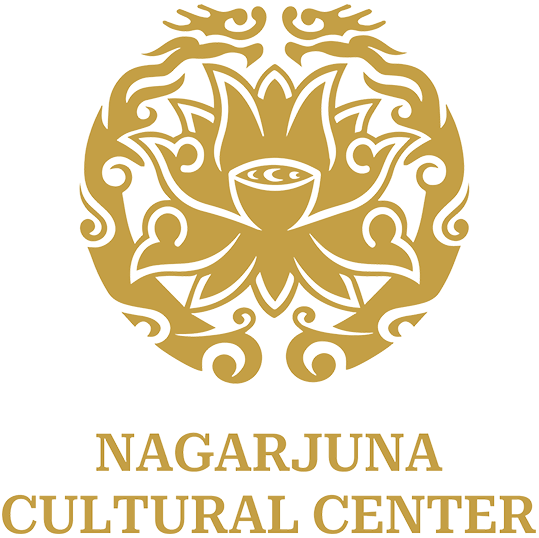Chinese Buddhism
In China, there are eight lineages of Mahayana Buddhism, each choosing their own scripture(s) from the Twelve Categories of Buddhist Scriptures for study and practice.
Anti-Buddhist Persecutions
However, anti-Buddhist persecutions such as "the Four Buddhist Disasters of Three Wu and One Emperor" caused considerable damage to Buddhist culture, resulting in the burning of Buddhist scriptures, forced abandonment of monkhood and nunhood, and even execution of monks and nuns.
Despite the past events, some of the scriptures of the eight Mahayana lineages have been passed down to this day, with Chan Buddhism and the Pure-land School being the most widespread. Chan Buddhism, which claims that it is not based on words and language, has the largest number of texts among them, with works as many as the Three Pitakas and Twelve Categories of Buddhist Scriptures, including "lamp records," stanzas, Kong'an (public case), and parables. While some of this information may be basic knowledge for those who already practice Buddhism, it provides background information for those who may be less familiar with it.
Chan Buddhism
It is important to understand that when Chan Buddhism says it is "established on no words and language," it does not mean that words are not necessary. Instead, it means that the true nature of the mind is beyond human language and concepts. The true nature of the mind cannot be expressed in words or accessed through the duality of language and concepts. Unfortunately, many people misunderstand this and think that Chan Buddhism does not require words, which is not accurate.
The main texts of Chan Buddhism include the Surangama Sutra, the Sutra of Perfect Enlightenment, the Vimalakirti Sutra, and the Platform Sutra of the Sixth Patriarch, which is the most famous one. As practitioners of Chan Buddhism, we particularly appreciate the Platform Sutra because it is the most precious heritage left to us by the Sixth Patriarch Master Hui Neng, who was as Chinese as we are.
Generally speaking, works by great masters or Bodhisattvas are not considered Sutra; they are treatises. However, the Platform Sutra is considered just as important as the Sutra directly taught by the Buddha.
Pure-land School
The Pure Land School is based on five Sutras and one Treatise. These include the Infinite Life Sutra, the Visualization Sutra, the Amitabha Sutra, the Chapter of the Perfect and Complete Realization of Bodhisattva Mahasthamaprapta, the Practice and Vows of Bodhisattva Samantabhadra, and the Rebirth Treatise.
Yogacara School
Xuanzang, a Tang Dynasty monk, is credited with bringing the Yogacara School to China from India. Although he is famous for his pilgrimage to India, his main purpose was to resolve a controversy among Chinese Buddhists regarding whether all sentient beings have Buddha-nature. After traveling over 25,000 kilometers, he arrived at Nalanda Monastery in India, where he received the transmission of Weishi from Silabhadra, the abbot of the monastery. This marked the beginning of the Yogacara School in China.
During the Tang Dynasty, a great anti-Buddhist persecution led to the burning of nearly all texts of Weishi in China. Fortunately, Japanese diplomats saved some of these texts and brought them to Japan. In the Republic of China, Ouyang Jingwu and his father-in-law Renshan Yang brought some of these texts back to China. Although these texts have been preserved, their practice methods have not been widely disseminated.
For instance, the Five Stages of Practicing Weishi, written by the great Master Kuiji, is a classic text of Weishi. Kuiji is also known as the Monk with Three Carts, referring to the carts he traveled with, which contained his scriptures and reference books, his favorite liquor, and his concubine.
Tiantai School
The Tiantai School of Chinese Mahayana Buddhism has its own theory, texts, and practice methods, including the Saddharma-puṇḍarīka-sūtra (Lotus Sutra) and Mohe Zhiguan, as well as its famous Tiantai Zhiguan (Calming and Contemplation) practice. Despite being a systematic and cohesive lineage that emphasizes following a sequential order of disciplined practice, the Tiantai School was unfortunately wiped out during an anti-Buddhist persecution. While many of its texts have been preserved and some descendants still exist, its practice methods are rarely seen today.
Huayan School
The Huanyan School, on the other hand, takes the Avataṃsaka-sūtra (Flower Ornament Sutra) as its guiding scriptural text.
Sanlun School
The Sanlun School, also known as the Chinese Madhyamaka, emphasizes the interpretation and practice of the three treatises of the Second Turn of the Dharma Wheel (Madhyamaka). These treatises include the Middle Treatise, the Hundred Treatise, and the Twelve Gate Treatise. The Hundred Treatise is Aryadeva's 400-Verse Treatise, which is studied in Tibetan Buddhism.
Vinaya School
The Vinaya School of Buddhism is known for its extensive teachings on monastic discipline and ethical conduct. It is comprised of the Four Vinayas and Five Treatises.
Chinese Esoteric Buddhism
Tantrayana, also known as Vajrayana, is a form of Buddhism that emphasizes the use of mantra, mudra, and visualization to achieve enlightenment. Although Chinese Esoteric Buddhism and Tibetan Vajrayana share some similarities, they also have significant differences. Both traditions make use of Tantric practices and rituals, but Tibetan Vajrayana places greater emphasis on the Yoga Tantra. Chinese Esoteric Buddhism has inherited and developed two sections of Tantrayana, known as Kriya (Action Tantra) and Charya (Performance Tantra). The Kriya Tantra and Charya Tantra that are currently studied and practiced in China are referred to as Tang Dynasty Esoterica, while Eastern Esoterism is mainly practiced in Japan.
Conclusion
I understand that terminology can be confusing and frustrating, but it is essential to go through them to better understand the topics covered in this discussion. I want to make things easier for you, no matter what your level of knowledge is. It is important to note that discussing terms is not about showing off knowledge but is necessary when exploring the relationship between Buddhist theory and practice.
Before delving into the topic, I believe it is important to have a good understanding of the background information related to the topic. This is why I briefly introduced the eight schools of Chinese Buddhism, each with its unique theory and practice methods. For example, Chan Buddhism focuses on meditative inquiry, while Pure-land School emphasizes the four methods of reciting Amitabha Buddha with mindfulness. From these theories, specific practice methods have been developed.
Tiantai School, for instance, has its own practice method known as Tiantai Zhiguan, which involves ten states of paramita. Rebuilding this school would require an extensive understanding of its theory and a multitude of practice methods.
Other schools such as Weishi School, Huayan School, Sanlun School, Vinaya School, and Tantrism have their methodologies accordingly. Among the Eight Chinese-Buddhist schools of Mahayana Buddhism, only Chan Buddhism and Pure-land School are still gaining popularity and attracting more followers compared to other lineages.
Chan Buddhism offers several ways of practice, such as Seven-day Chan retreat, Hua Tou contemplation, and Kong'an (public case) contemplation. On the other hand, the Pure-land School focuses on the four methods of reciting Amitabha Buddha with mindfulness.
Regarding the difference between Mindfulness of the Buddha through contemplative reflection and mindfulness of the Buddha through meditative visualization, the former involves contemplating the Buddha's virtue and the Pure-land with mindfulness, while the latter requires vividly visualizing the sun and water in the Pure-land. The Pure-land School has a total of sixteen visualization methods, and Mindfulness of the Buddha's real appearance is a method of practicing Emptiness by focusing on the nature of the mind. Nowadays, the most popular method of reciting Amitabha Buddha is through mindfulness of the Buddha's name.
It is important to remember that each of the eight Chinese-Buddhist schools of Mahayana Buddhism has its own theories and practice methods, and it is not necessary to go too deep into them. The purpose of this talk is to provide a general understanding of the relationship between Buddhist theory and practice, without overwhelming the audience with too much information.





